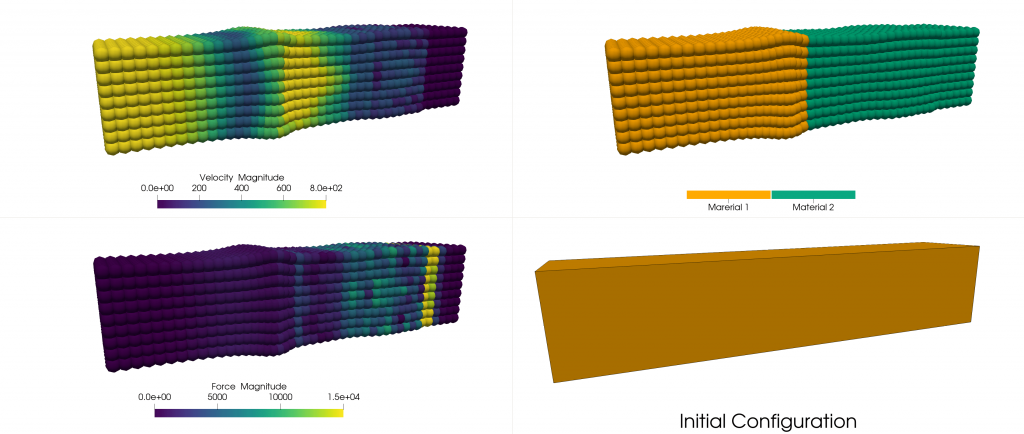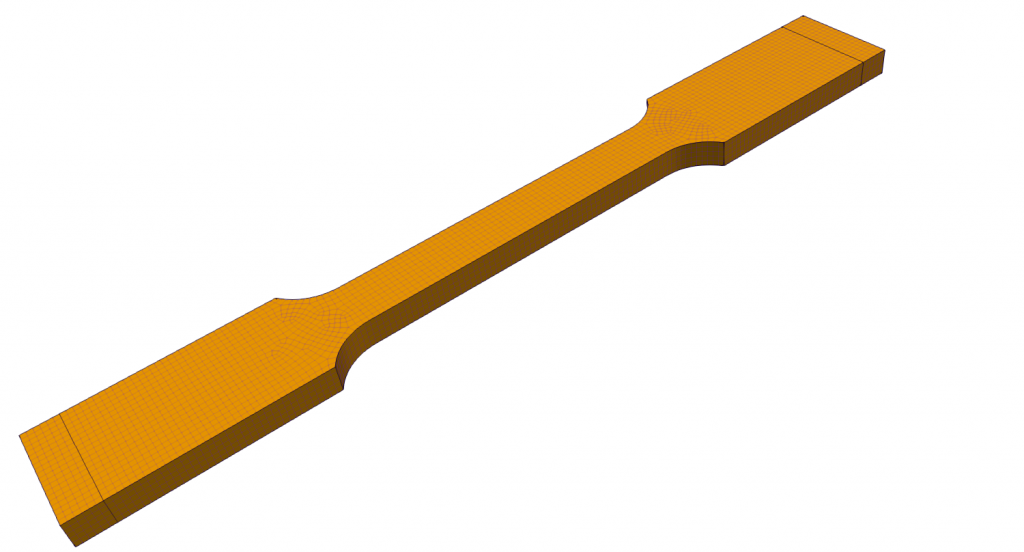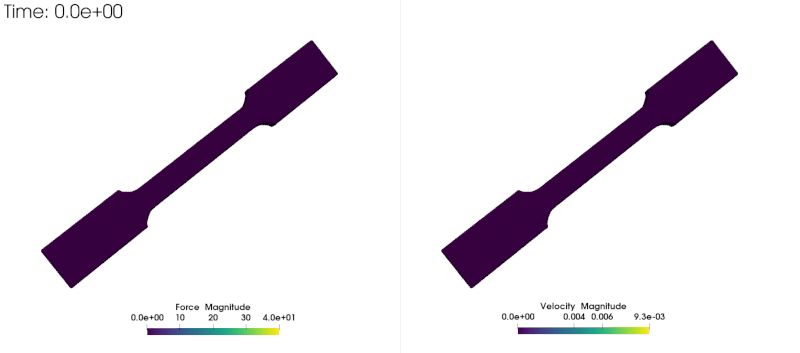Next Generation Computational Tool for Material Microstructure Modeling
There is growing interest in high fidelity material models that can realistically resolve large deformation and complicated fracture mechanics spanning microscale to mesoscale, particularly small scale material microsctructure.
Currently mechanical simulation of microstructure datasets is limited by the extreme domain size required to resolve the physics and the difficulty in creating complex structures using classical continuum mechanics methods. Peridynamics is a non-local continuum mechanics theory, offering unique capabilities beyond classical continuum mechanics when applied to the analysis of microstructure data. At the microscale, void growth and fracture dynamics are key constituents in the material response. Peridynamics specifically addresses mechanics in the presence of discontinuities and the equations can be solved as a discrete sum which is readily adapted to parallel processing using many of the hardware acceleratores such as GPU’s.

Peri-dynamics: near (περί) - force (δύναμις).
Peridynamics can be considered as the continuum version of molecular dynamics. This feature makes the approach suitable for multi-scale analysis of materials and can be extended to other physics, e.g. thermal, fluids and has potential as a general multi-physics framework or could be integrated into larger scale simualtions using traditional finite element methods.
Applications
- Dynamic material modeling.
- Material failure and Damage simulation
- Analysis of multi-grain microstructure data
- Coupling with larger or smaller scale material physics


Capabilities
- State-based peridynamic implementation
- Dynamic Linear and non-linear material deformation.
- Implicit resolution of Fracture (no additional model required for crack initiation and growth)
- High Performance Computing
- Kokkos Performance Portability Programming EcoSystem
- Provides interface for parallel computation
- Support for OpenMP, CUDA, RocM, HPX or serial execution based on target hardware
- Support for ExodusII file format for analysis and visualization with Paraview or VisIt
- Open Core to facilitate adoption and community growth
Benefits
- Custom material models
- Implicit description of material degradation
- HPC Capable
